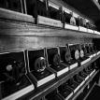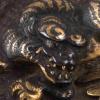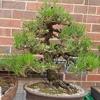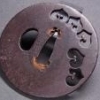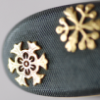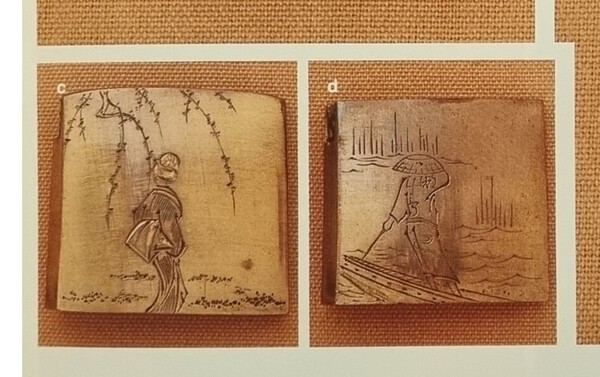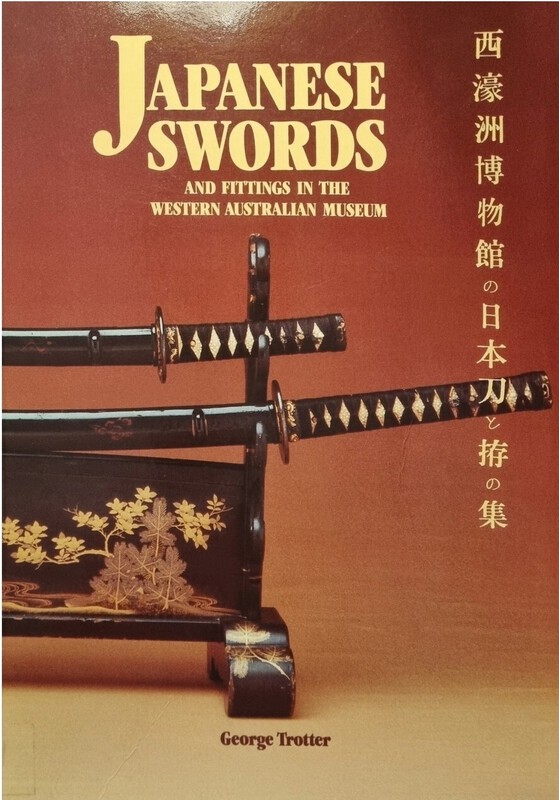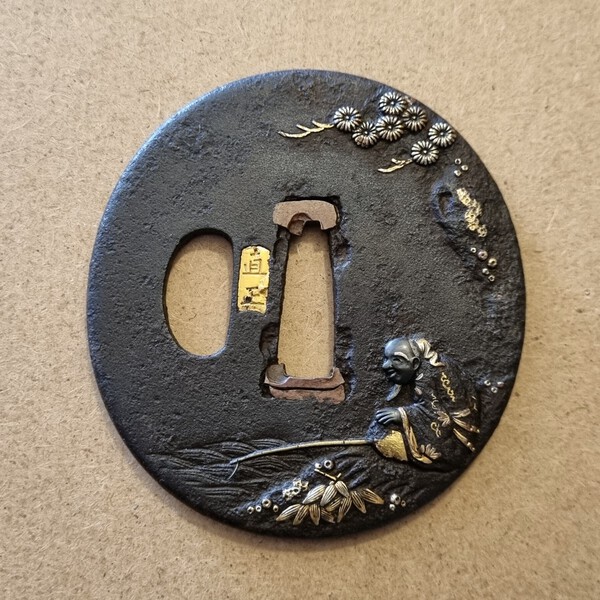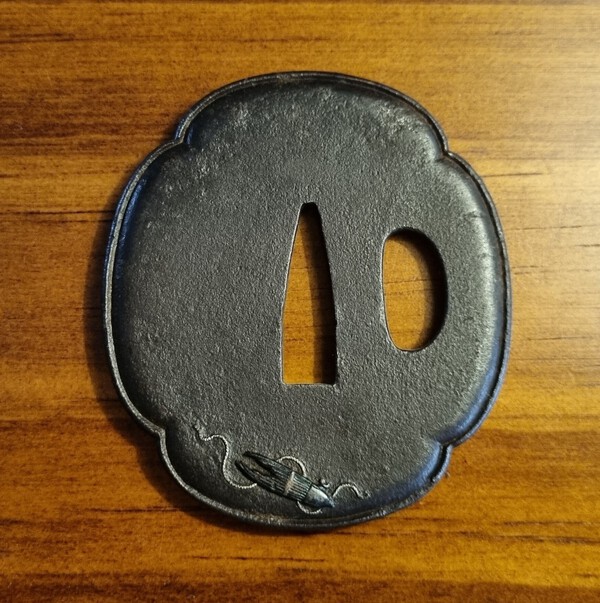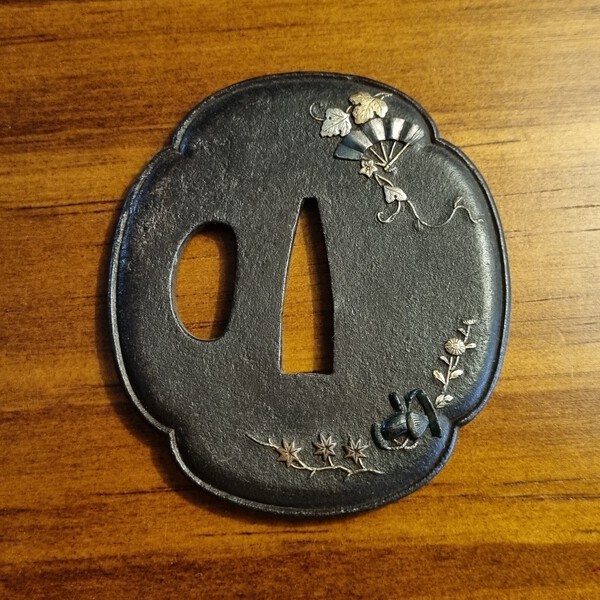-
Posts
528 -
Joined
-
Last visited
About Steves87
- Birthday May 24
Contact Methods
-
Website URL
www.instagram.com/rolling_brooks_gallery/
Profile Information
-
Gender
Male
-
Location:
Perth, AUS
-
Interests
Kenjutsu, Tsuba, carved camphor chests, snuff bottles, Japanese Artworks
Profile Fields
-
Name
Stephen King
Recent Profile Visitors
1,056 profile views
Steves87's Achievements
-
I think they they work well as a married daisho. As Alex pointed out though, the difference in metal thickness around the hitsu-ana is the most obvious difference between the two, followed closely by the slightly different shape of the two hitsu-ana. These two differences are probably what makes them not a "true" daisho in my opinion. I think the surface condition between the two is acceptable as there is no guarantee that a daisho would be stored in a daisho kiribako, which leads to the possibility of different rates of storage/environmental conditions (that can subsequently lead to degradation). The tagane ato, if added when fitting (and not as decoration) does not need to be similar, as this can be needed at differing times from multiple fitment activities. Having said that though, if both are fitted at the same time by the same person, I would expect that (like me) they choose the same punch/method/locations? I think the size relationship is also acceptable, being large is typical, and if your have a large Katana guard, you don't want a comparitively miniature Wakizashi daisho guard.
-
hi Leon, It can be a difficult task finding a source. There is a document from Ford Hallam to make your own. Have a look, it may be something you enjoy having-a-go with.
-
I'd say Shakudo, which should be a consistent "black"
-
It's a question and a search that you will ask forever, it just doesn't have a simple answer. Have a look through this thread as this is one of the more recent
-
Is there a publicly accessible database of every papered item, including details and images? Or at least one containing the appraised items since digital word processing and digital photography has been used? That as a source, has the potential to change everything in the education of Nihonto... and drastically, especially for fittings. I haven't found it yet, so it either doesn't exist, isnt publically available (to members?), or it is advertised woefully. I feel that this type of database may be counter productive to the financial business of the NBTHK, but if education or the future of appraisals is so important, then...?
-
Thanks for this one Peter, I hadn't read this one yet, but I have the perfect chance to cite it at the moment, in a study. Page 155 brings up a point that is often asked, which side is the omote when both are identical? I usually say the omote is the side with tagane ato, if there are none, then I say the side in best condition (or most remaining zogan). I have a utsushi to the example they have given (fig4), in this case I had to go with condition (one side had slightly better nunome zogan). It would be interesting to see what others have to say. Back on topic though, I will definitely confirm the importance of using a lighted base support. It is basically the only way to take the shadows out of the sukashi, without affecting the colour and contrasts of the Tsuba plate. I still can't get it right, there is always a compromise, especially when shadows are needed to convey the relief of carvings.
-
I found these two in George Trotter's book "Japanese swords and fittings in the Western Australian Museum" while looking through it during the week. Its a pretty interesting Habaki, George did a good job on the book too. The museum may have to lift their fittings (Tsuba) game though.
-
Dale, your skills in this area are second to none! It would be great if the bonhams or christies could hire you to do their past Tsuba items!?
-
I don't know too much about the whole system, and I suspect most other people do not either. I could be completely wrong about that, but there appears to be no transparency to the whole system. You pay a considerable load of dollars (especially for non-USD earners), the item disappears for a while, then it may come back with a paper that has been produced by an un-known quantity, using an un-known reference source (how old, how complete, how updated?). The papers usually confirm what is already known or produce a result that is questionable to many seasoned collectors. I think the paper system is important, but I can tell you now, it is in drastic need of reform. Pre internet, pre-web 2.0, or maybe even pre 2010 the system worked ok, now we have powerful crowd sourced information and web-based access to massive amounts of digitised Nihonto related information. If the papering system was as transparent as these powerful new-aged ways, it may have needed to increase its intake, not lessen it. Maybe papering is still totally superior to the new ways, but they aren't making a good case for it. Its currently a petrol system in a hybrid world, I hope they see this before everything goes electric.
-
It is exceptionally uniform and contrasting, I can't decide if it was intentional or purely just time induced?
-
I have seen a few (probably 4) Nara guards in the past with a zogan covered mei, it appears to be something they did. I have one myself, and if I'll take a semi-educated guess, I'd say your guard was similar to mine, and the zogan (however it was fixed) has fallen off. I imagine the base plate has the mei (as with your example) and then the zogan material is depressed into the mei characters. I have asked here on the forum about this practice with the mei, it was a few years ago, but I don't think there were any definite answers.
-
Yes, I've had it described as sho-no-fue. I don't have an example as shown (as you know), but I do have this one with the sho depicted on the reverse side. Edit: of note, the nobles cap is also depicted on guard too.
-
Mauro, exactly what I have been thinking for years (in terms of getting an item papered). The whole system of papering an item is very much a pre-web 2.0 system. I think it was important up until the 2010's, but these days it very much comes across as a boys club, or like you say, religion. Is there any transparency to the process/decisions when papering?
-
From those photos, that doesn't appear to be a faked patina. It may not be the original patina (tagane patina is very consistent), but who knows? In my experience with fake patina, the guards will have more of a black, or quite dark finish with a somewhat "dry" appearance. The biggest tell however, is by submerging the guard in static hot water, if the finish starts to leach, it is a fake patina. There are a few high volume sellers who's guards consistently leech when submerged, and at this stage I have about an 80% strike rate of calling a guard out, as having a fake patina (once in hand), but this doesn't always translate with photographs.


